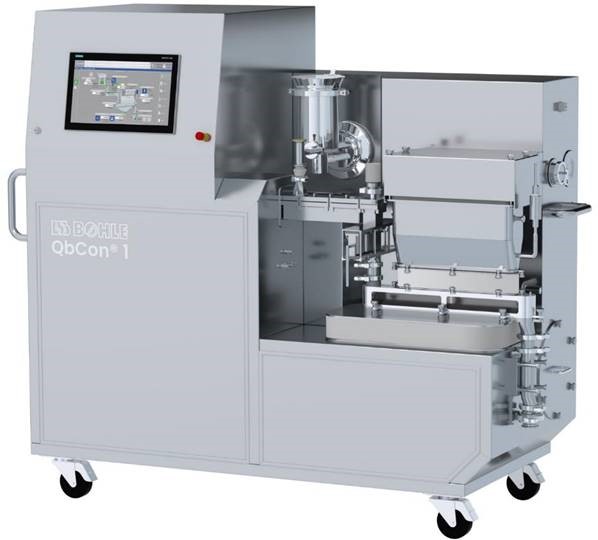2022 Annual Meeting
(410e) Continuous Twin-Screw Wet Granulation and Fluid-Bed Drying at the Pilot Scale and Comparison to Batch Granulation and Drying
Authors
L.B. Bohle has developed a novel, continuous vibratory fluid-bed dryer system at both pilot (QbCon® 1) and commercial (QbCon® 25) scales. The systems are comprised of an integrated loss-in-weight feeder, a twin-screw granulator with liquid injection, the continuous dryer, and discharge with the option for integrated process analytical tools throughout.
This study sought to demonstrate the feasibility of continuous wet granulation and continuous drying at the pilot scale (1 â 3 kg/h) using placebo and active formulations across a range of process conditions. Each of the formulations had been previously used for batch high-shear or fluid-bed granulation.
The QbCon® 1 system enabled much more rapid evaluation of process parameters and reduced down-time between conditions relative to batch processes. Conditions were altered and representative granules were collected in a few minutes. Twin-screw wet granulation required lower granulation fluid levels (GFL, also referred to as liquid/solid ratio, L/S) than for the batch operations, probably due to improved distribution of the granulating fluid. The vibratory fluid-bed dryer dried the granules to less than 2% loss on drying in a few minutes, at up to 30% GFL. Little drying process optimization was required. Granule size distribution, flow behavior, and tablettability performance indicate that the QbCon® 1 system can produce granules with comparable properties to the batch processes.
These results suggest that the granulator and novel vibratory fluid-bed dryer can effectively process a range of formulations and continuously produce granules with the desired physical properties.
